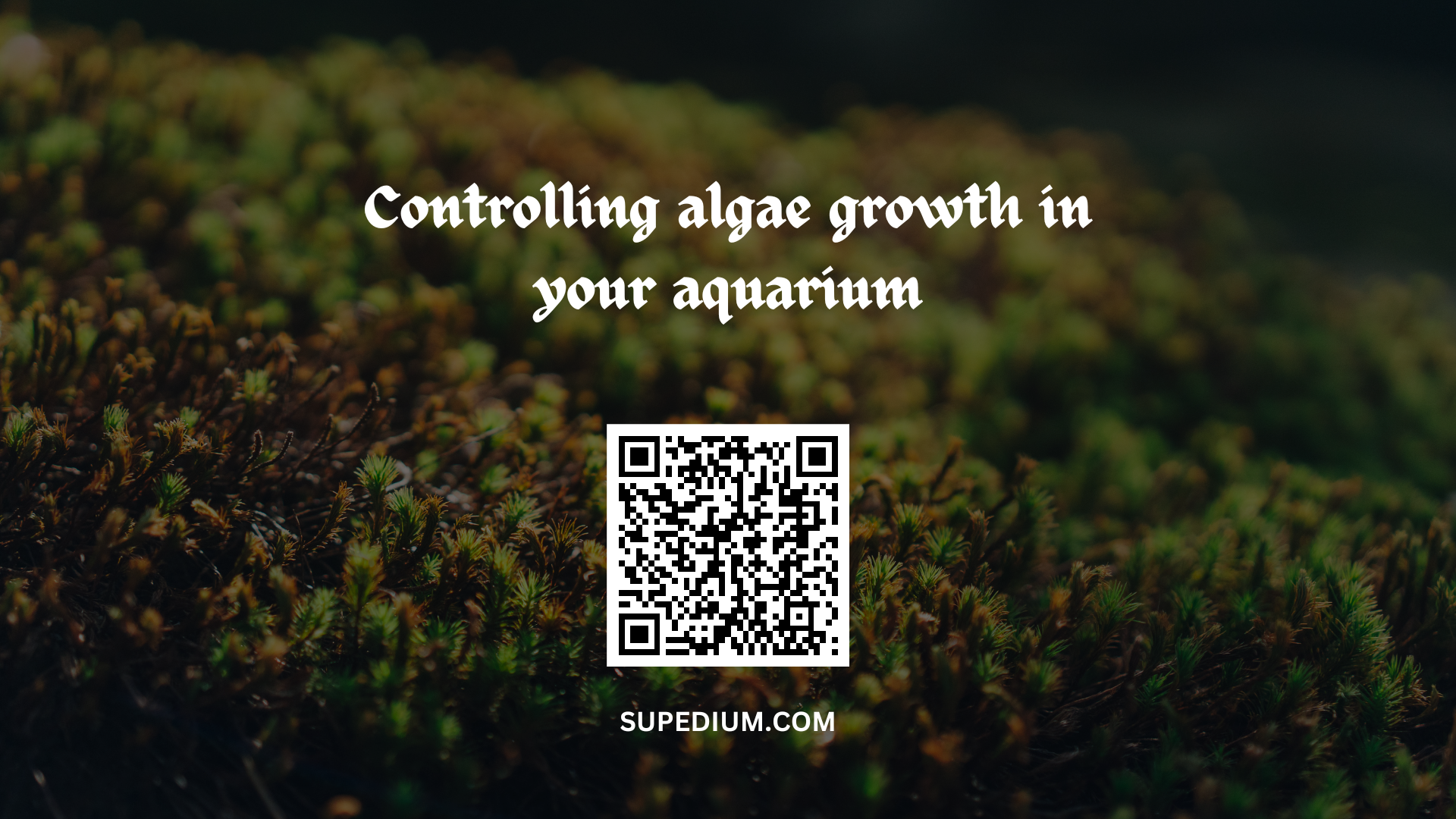![]()
In many aquariums, algae growth is a prevalent issue that, if left unchecked, can result in several problems, including poor water quality, decreased oxygen levels, and the development of hazardous germs. Thankfully, several efficient strategies to manage algae growth in your aquarium exist. In this post, we’ll go through the many techniques for reducing algae development and how to use them well.
Knowledge of Algae Growth
It’s essential to comprehend the causes of algae growth in aquariums before discussing techniques to control it. Three things are necessary for algae to grow: light, nutrients, and carbon dioxide. These components are typically found in great abundance in aquariums, which promotes excessive algae development. It is important to remember that not all algae are harmful, and some can even be good for the environment of your aquarium.
Techniques for Limiting Algae Growth
Limit your exposure to light.
The algae growth rate in your aquarium is closely related to the amount of light it receives. Reducing the amount of light that enters the aquarium is one method of preventing algae growth. The lighting schedule can be changed, the light intensity can be decreased, or an aquarium hood can block off extra light.
Keep the Water Quality in Check
Controlling algae growth requires maintaining acceptable water quality. Algae can increase when there is an excess of nutrients and carbon dioxide in the water due to poor water quality. Do routine water changes and monitoring parameters to maintain acceptable water quality.
Add Fish That Eats Algae
The capacity to ingest algae is a trait shared by numerous fish species. Including algae-eating fish in your aquarium can help you effectively manage algae growth. Siamese algae eaters, plecos, and otocinclus are well-known species of algae-eating fish.
Use products that control algae
Many items on the market can help you manage algae growth in your aquarium. Products for controlling algae might be chemical, biological, or mechanical. But, it’s crucial to pick the appropriate product for your particular type of algae and carefully adhere to the manufacturer’s instructions.
Provide proper feeding and exposure to light
Overfeeding your fish might result in an overabundance of nutrients in the water, promoting more algae growth. Avoid overfeeding your fish, and match their feeding plan with their light exposure schedule, to help reduce algae growth.
Uphold a Healthy Water Flow
The algae growth can be stopped with proper water flow. Areas of the aquarium may get stagnant due to insufficient water flow, which can result in an overabundance of nutrients and carbon dioxide. Choose a top-notch aquarium filter and set it properly to ensure adequate water flow.
Keep the Right Temperature
A proper temperature must be maintained to control algae growth in your aquarium. Algal growth can be slowed down by low temperatures while accelerated by high temperatures. Ensure the temperature in your aquarium stays within the range ideal for the aquatic life inside.
To Conclusion
Although algae growth is a typical issue in many aquariums, it can be successfully managed with the correct techniques. Algae can be effectively controlled by reducing light exposure, maintaining good water quality, introducing fish that consume algae, utilising algae-controlling products, balancing feeding and light exposure, maintaining good water flow, and maintaining a suitable temperature. You can keep your aquarium tidy, healthy, and free of too many algae using the techniques described below.
Test Your Understanding ✍️






Be the first to comment